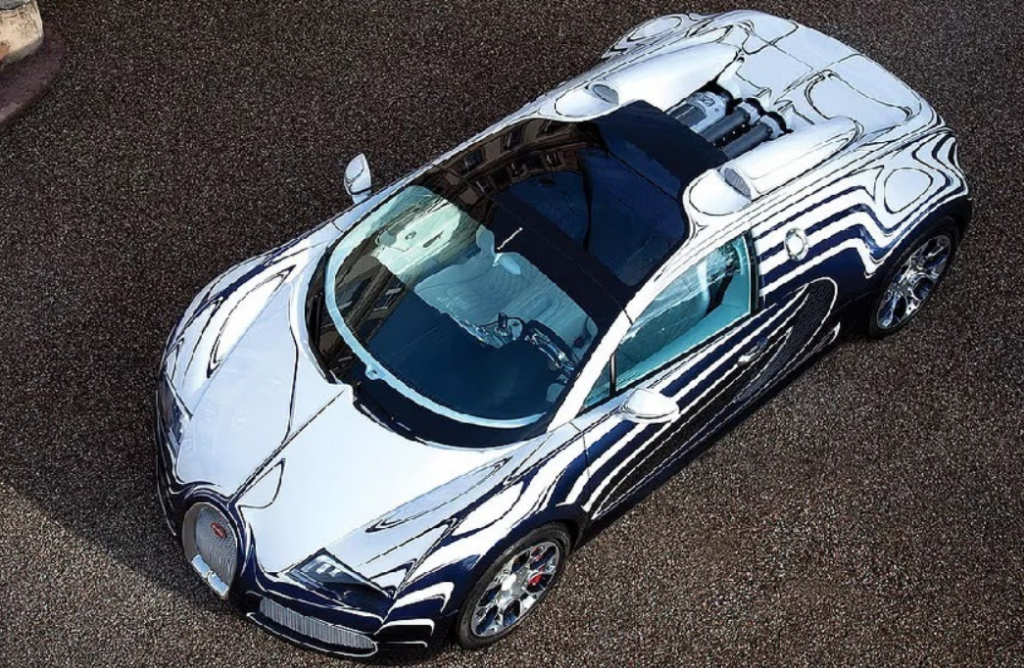
The Bugatti Veyron is unlike any other car. It is the first hyper sports car of the modern era, world record breaker and icon of automotive design. When production of the Veyron began 15 years ago, Bugatti made history. This was a car that would generate an extraordinary 1,001 PS, reach a top speed of 407 km/h and accelerate from 0 to 100 kmph in just 2.5 seconds. Its development is still regarded as one of the greatest technological challenges in the automotive industry. Three hundred Veyron 16.4 coupés and 150 roadsters were produced over a 10-year period in the French town of Molsheim including very special models and editions some of which really stand out.

Veyron 16.4 Pur Sang (2007)
The Pur Sang marked the beginning of Bugatti’s range of special editions and customisation programme. The car was limited to just five units and was sold out within just 45 minutes during the 2007 Frankfurt Motor show. In order to highlight the technical beauty of the materials, Bugatti decided against a paint finish and reinterpreted the classic Bugatti two-tone design element in a new way. The carbon outer skin enclosed the W16 engine and vehicle interior, while the light reflection of the aluminum paneling highlighted the contours of the Veyron. Instead of using two different colors, the Pur Sang came with a contrast of carbon and aluminum — the combination of these two materials being a first in automotive engineering.

Bugatti Veyron 16.4 Super Sport (2010) “
It was the first time that we in the design department had applied the ‘form follows performance’ approach so systematically,” explains Achim Anscheidt, Design Director at Bugatti. The goal was to break the world speed record for series production cars for which aerodynamics had to be optimized. Interestingly, details of the roof were based on an early pre-design of the Bugatti EB110 SS, the super sports car of the 1990s. The engine had an output of 1,200 PS, enabling the car to accelerate from 0 to 100 km/h in 2.5 seconds and reach a top speed of 415 km/h. Eventually it did 431.072 km/h, thereby becoming the world’s fastest production super sports car. Bugatti put the Veyron 16.4 Super Sport on sale in July 2010. The first five “World Record Edition” models sold out immediately.
Veyron 16.4 Grand Sport L’Or Blanc (2011)
The Grand Sport L’Or Blanc was one of a kind, featuring high-quality porcelain both on and inside the car — again a first in the automotive industry. The idea for the car even has its own story; from early 2011, there was a desire at Bugatti to create a one-off, an art car. The designers initially projected reflections onto the surface of the car using light strips which provided information about the beauty, quality and tension of the surface. This made it easier to identify proportions and patterns in the car. The designers then captured the magic of these reflections by precisely applying blue strips of tape onto a white painted Veyron. The team repeatedly surveyed their work, adjusting the proportions of the strips to the intervening spaces. What eventually emerged was the combination of a beautiful, fragile material and a vehicle of high technical complexity. The one-of-a-kind car was sold to a collector.
Veyron 16.4 Grand Sport Vitesse (2012)
This was a car that looked like a coupé when the roof was closed but became a roadster with the open roof. With 1,200 PS, the Grand Sport Vitesse set a new speed record for open-top sports cars, with an officially recorded speed of 408.84 km/h. The World Record Car (WRC) Edition of the Vitesse was limited to just eight cars and was sold out immediately. To this day it is the only open-top Bugatti hyper sports car of the modern era.
Veyron Grand Sport Venet (2012)
Another one-of-a-kind and work of art was created in collaboration with the French artist and sculptor Bernar Venet. With the eponymous Veyron 16.4 Grand Sport, Bugatti created a true art object that combined surface design with interior design inspired by haute couture. The only matter on which Anscheidt and Bernar Venet did not initially agree was Venet’s idea to paint the Veyron in a color gradient from orange to brown, starting from an early stage of rusting iron all the way to heavy, brown rust. Together they considered how they could portray this transformation using a different concept. The rust-like color scheme of the numbers, which could also be seen in the interior, made reference to a series of successful sculptures by Venet. The Grand Sport Venet was presented to the world in December 2012 and now belongs to a private collection.
Shams Naqvi is Senior Editor at carandbike.com